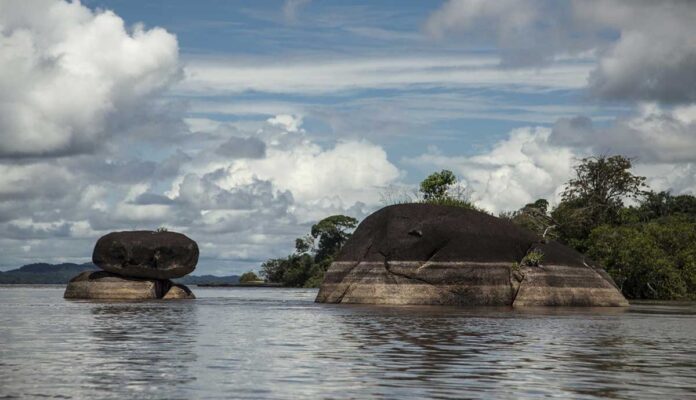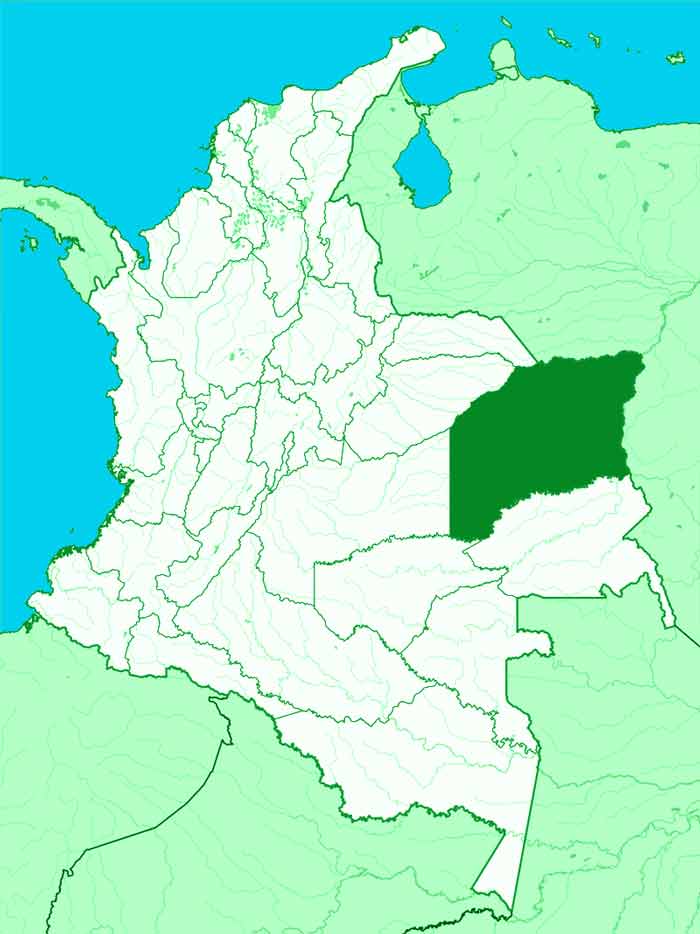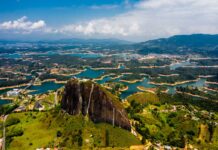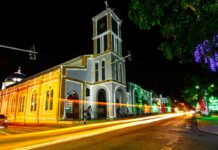Vichada It's one of the 32 departments of Colombia, located between the regions of the Orinoquia and the Amazon, is made up of 4 municipalities, being Puerto Carreño its capital; Its natural wealth has made it a highly favored destination for ecotourism lovers. It is the second largest department in Colombia after the Amazon.
The name “Vichada” in the Guahíbo indigenous language means: “Where the savanna becomes a jungle”, according to the 2018 census, 58% of the Vichada population are recognized as Indigenous; The majority of members of this population are part of the Sikuani people.
| VICHADA SYMBOLS |
Flag of Vichada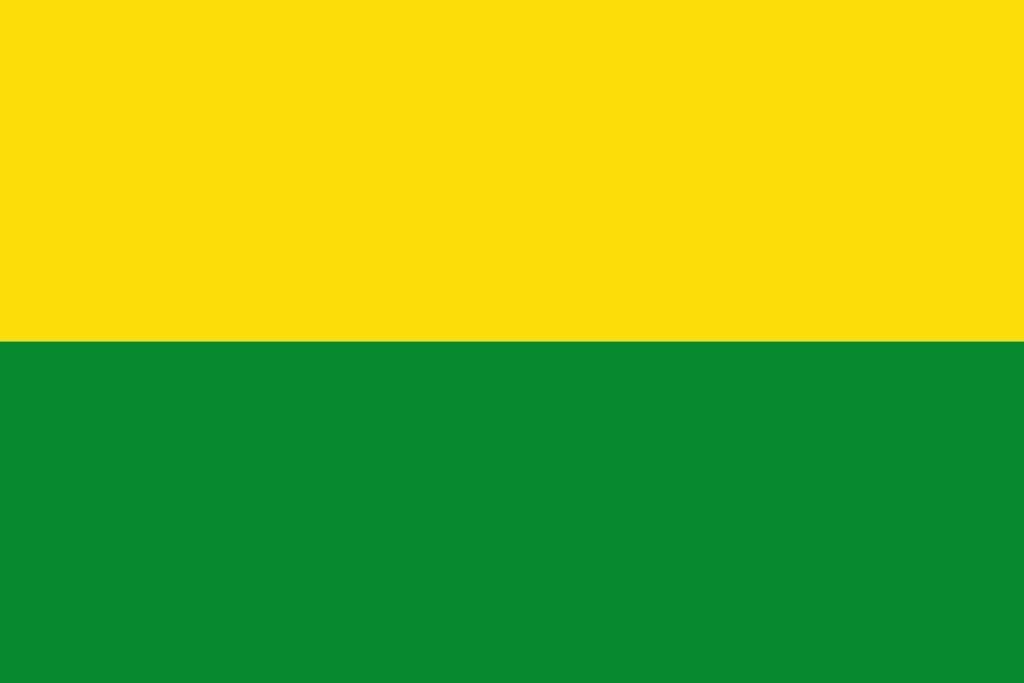 |
Coat of arms of Vichada |
| Click here to listen to: Vichada anthem |
| GENERAL DATA OF THE VICHADA |
| Country: Colombia. |
| Entity: Department. |
| Capital: Puerto Carreño |
| Demonym: Vichadense |
| Motto: Land of men for landless men |
| Foundation: June 3, 1913. |
| Erection as a department: July 4, 1991 |
| Number of Municipalities: 4 |
| Official Web site: vichada.gov.co |
History of the Department of Vichada:
At the time of the Spanish conquest, several indigenous groups were found in Vichada, some of which survive today; among them that of the guahibos, the curripacos and piapocos, and the cuivas, desanos, puinaves and sálivas. In order to survive, these natives have moved towards habitats less conducive to survival; This is due to the harassment they have suffered.
From colonial times until the mid-19th century, the current territory of Vichada belonged to the province of Bogotá; during the Greater Colombia (1819-1830), was part of the Boyacá department; between 1831 and 1857, together with the Goal, he Territory of Saint Martin; In 1857, it became part of the Sovereign State of Cundinamarca; In 1867 it became administered directly by the national government under the name of Territorio de San Martín; Vichada came to life as an independent entity in 1913, the year in which Decree 523 created the Vichada police station, segregated from the jurisdiction of the Municipality of Meta.
When Vichada was created, its capital was established in the town of San José de Maipures. Politically-administratively, the special police station was made up of the municipality of Maipures and the townships of San José del Vichada and Empira. On June 12, 1924, by decree 1021, the capital was moved to Egua, (today Puerto Nariño) in the mouths of Vichada River and the municipality of Orinoco is created. On June 5, 1974, the National Government definitively moved the capital to the municipality of Puerto Carreño, the administrative center of Vichada founded in 1922 by the General Buenaventura Bustos, first Commissioner of Vichada. Finally, on July 4, 1991, the National Constituent Assembly elevated Vichada to the category of special department, having its full powers as a department as of 1995.
Political-administrative division of Vichada
The Department of Vichada is made up of 4 municipalities of which Puerto Carreño is the capital. Below is the list of Municipalities of Vichada.
| Municipalities | Category |
|---|---|
| Puerto Carreño | Municipality (Capital) |
| Spring | Municipality |
| Saint Rosalia | Municipality |
| Cumaribo | Municipality |
In addition to these municipalities, the Department has several reservations and indigenous settlements that constitute special territories for the protection of these groups.
Gastronomy of Vichada
The department is part of the Colombian region of Orinoquia or area of the eastern plains. For this reason, many of the dishes from the Vichada cuisine carry with them that characteristic flavor and aroma of the plains culture. Fish is the protagonist of many of its recipes due to the water wealth that the region enjoys. We can also find dishes made from beef such as “Mamona”, the traditional Casabe made from cassava and one of the most important heritages of the indigenous gastronomy of Latin America, among many others. Among the most popular foods of Vichada gastronomy we find:
- The Mamona
- Baked chigüiro
- Curito broth
- Casabe
- Baked pomfret
- Moriche chicha
- Dulce de merey llanero or cashew
- Rose apple candy
- Llanero brandy cocktail with star fruit
Find out here the complete list of recipes from the Vichada gastronomy
Vichada Fairs and Festivals
The llanero culture in communion with the ethnic and ecological diversity of the department has given rise to various events that exalt these elements and that seek to strengthen the identity and customs of the Vichadenses. Some of the most important fairs, festivals and festivals in Vichada are:
- The International Corrido Llanero Tournament
- International Folk Festival and reign of Curito
- Cumare Festival
Find out here the complete list of festivals, fairs, parties and events in Vichada
Vichada Tourist Sites
Vichada has a wide variety of tourist sites for lovers of nature, culture, gastronomy and science; Its privileged location makes it worthy of abundant flora and fauna, its water and ichthyological wealth have made it one of the most desired destinations worldwide for Sport fishing, in addition to being a place with a high presence of indigenous groups and reservations that enrich the area with their culture, customs and gastronomy. Some of the most popular tourist sites in Vichada are:
- El Tuparro National Natural Park
- The Las Gaviotas Experimental Center
- The Ventanas Nature Reserve
- The House of Culture of Puerto Carreño
- Flag Hill
- Nimajay Nature Reserve
Find out here the complete list of tourist places in Vichada
Economy of Vichada
The economy of the department focuses mainly on very low-scale agricultural, forestry and livestock activities, as well as extensive livestock farming (highlighting cattle) and extractive activities. In recent years, with the peace treaties signed for the dismantling of the guerrillas, tourism in the department has been strengthened, becoming a growing economic force.
The most relevant sectors at the departmental level are: Public administration and defense; mandatory social security, commerce, repair, restaurants and hotels, construction, agriculture, livestock, hunting, forestry and fishing.
Legends and Myths of Vichada
The department of Vichada is home to a rich tradition of myths and legends that have endured through generations. These stories are an essential part of the cultural heritage of the various indigenous ethnic groups that still flourish in the Orinoquía region. Furthermore, over time, new legends have been forged as a result of the cultural exchange that occurred during the colonization processes.
Among the most notable myths of the vichada are “The myth of the kaliawirinae tree, “The myth of Kuwei and the creation of humans”, and “The myth of Kuemi Palibaisi and the liberation of humanity”. These indigenous oral traditions persist today. Likewise, there are legends as fascinating as that of “The fireball or footlight”, the legend of “the transformation of dolphins (pink dolphins) into human beings”, the legend of the “Silbón”, and the legend of “charm of Punta de Laja”. These stories continue to live on in the imagination of the inhabitants of Vichada.
It is important to highlight that many of these legends and myths have a marked regional character, since Vichada is part of the eastern plains, a vast region that covers several departments of Colombia and Venezuela.


